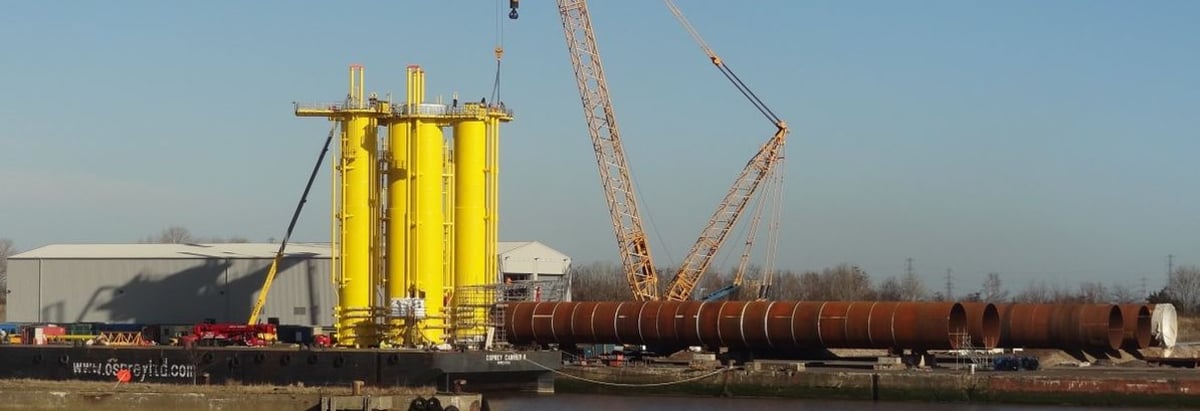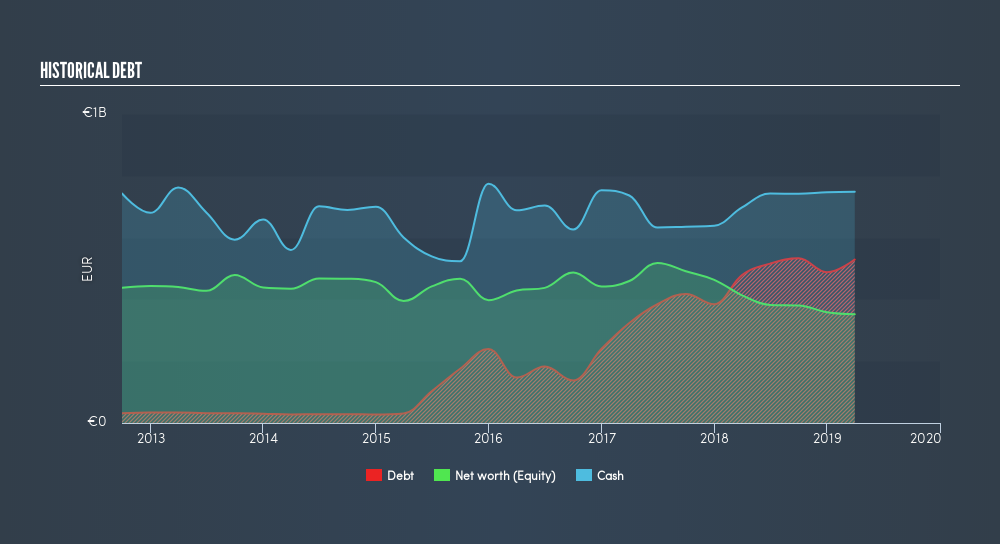
Want to participate in a short research study? Help shape the future of investing tools and you could win a $250 gift card!
Howard Marks put it nicely when he said that, rather than worrying about share price volatility, 'The possibility of permanent loss is the risk I worry about... and every practical investor I know worries about.' When we think about how risky a company is, we always like to look at its use of debt, since debt overload can lead to ruin. We can see that Técnicas Reunidas, S.A. (BME:TRE) does use debt in its business. But is this debt a concern to shareholders?
Why Does Debt Bring Risk?
Debt and other liabilities become risky for a business when it cannot easily fulfill those obligations, either with free cash flow or by raising capital at an attractive price. Part and parcel of capitalism is the process of 'creative destruction' where failed businesses are mercilessly liquidated by their bankers. While that is not too common, we often do see indebted companies permanently diluting shareholders because lenders force them to raise capital at a distressed price. Of course, plenty of companies use debt to fund growth, without any negative consequences. When we think about a company's use of debt, we first look at cash and debt together.
See our latest analysis for Técnicas Reunidas
What Is Técnicas Reunidas's Net Debt?
The image below, which you can click on for greater detail, shows that at March 2019 Técnicas Reunidas had debt of €529.0m, up from €478.6m in one year. But it also has €748.2m in cash to offset that, meaning it has €219.2m net cash.

How Healthy Is Técnicas Reunidas's Balance Sheet?
We can see from the most recent balance sheet that Técnicas Reunidas had liabilities of €3.04b falling due within a year, and liabilities of €508.9m due beyond that. Offsetting these obligations, it had cash of €748.2m as well as receivables valued at €2.53b due within 12 months. So its liabilities outweigh the sum of its cash and (near-term) receivables by €262.3m.
Técnicas Reunidas has a market capitalization of €1.21b, so it could very likely ameliorate its balance sheet if the need arose. But it's clear that we should definitely closely examine whether it can manage its debt without dilution. Given that Técnicas Reunidas has more cash than debt, we're pretty confident it can manage its debt safely.
The good news is that Técnicas Reunidas has increased its EBIT by 4.3% over twelve months, which should ease any concerns about debt repayment. When analysing debt levels, the balance sheet is the obvious place to start. But it is future earnings, more than anything, that will determine Técnicas Reunidas's ability to maintain a healthy balance sheet going forward. So if you want to see what the professionals think, you might find this free report on analyst profit forecasts to be interesting.
Finally, a business needs free cash flow to pay off debt; accounting profits just don't cut it. Técnicas Reunidas may have net cash on the balance sheet, but it is still interesting to look at how well the business converts its earnings before interest and tax (EBIT) to free cash flow, because that will influence both its need for, and its capacity to manage debt. Considering the last three years, Técnicas Reunidas actually recorded a cash outflow, overall. Debt is usually more expensive, and almost always more risky in the hands of a company with negative free cash flow. Shareholders ought to hope for and improvement.
Summing up
Although Técnicas Reunidas's balance sheet isn't particularly strong, due to the total liabilities, it is clearly positive to see that it has net cash of €219m. On top of that, it increased its EBIT by 4.3% in the last twelve months. So we don't have any problem with Técnicas Reunidas's use of debt. Over time, share prices tend to follow earnings per share, so if you're interested in Técnicas Reunidas, you may well want to click here to check an interactive graph of its earnings per share history.
At the end of the day, it's often better to focus on companies that are free from net debt. You can access our special list of such companies (all with a track record of profit growth). It's free.
We aim to bring you long-term focused research analysis driven by fundamental data. Note that our analysis may not factor in the latest price-sensitive company announcements or qualitative material.
If you spot an error that warrants correction, please contact the editor at editorial-team@simplywallst.com. This article by Simply Wall St is general in nature. It does not constitute a recommendation to buy or sell any stock, and does not take account of your objectives, or your financial situation. Simply Wall St has no position in the stocks mentioned. Thank you for reading.
About BME:TRE
Técnicas Reunidas
An engineering and construction company, designs and manages industrial plant projects worldwide.
Solid track record with adequate balance sheet.
Similar Companies
Market Insights
Community Narratives



